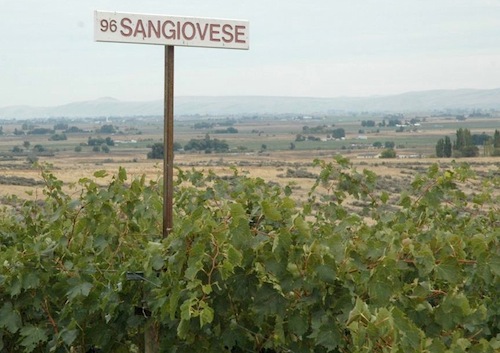
Sangiovese, Italy’s most-planted grape variety, is gaining a toehold with Washington winemakers.
The red grape, most famous in Italy’s Chianti Classico, Montepulciano and Montalcino regions, will never be a major variety in Washington, but it is the state’s sixth-most-important red variety, after Cabernet Sauvignon, Merlot, Syrah, Cabernet Franc and Malbec. Last fall, Washington winemakers crushed 1,300 tons of Sangiovese, up from just 500 tons as recently as 2004.
That’s enough to produce about 75,000 cases of wine – a tiny amount of Washington’s 12 million cases of annual production. Additionally, a lot of Sangiovese is used to craft some of the country’s best rosé (with Barnard Griffin’s Rosé of Sangiovese being one of the prime examples). And a fair bit goes into red blends, often wines that emulate Italy’s famed Super Tuscan wines.
Sangiovese’s name comes from “blood of Jove” – a name for the Roman god Jupiter. The grape is prolific, often able to produce prodigious amounts of fruit, which is one reason the Italians love the variety so much. At its best, Sangiovese reveals aromas and flavors of high-toned red fruit such as cherry, strawberry, pomegranate and cranberry and is backed with bright acidity. With this combination, it’s easy to imagine enjoying Sangiovese with a plate of spaghetti and meatballs or a hearty helping of lasagna.
Here are 12 examples of Washington Sangiovese we’ve tasted recently. As you can imagine, all are made in small amounts, so ask for these at your favorite wine merchant or contact the wineries directly.

Walter Dacon makes a delicious Sangiovese